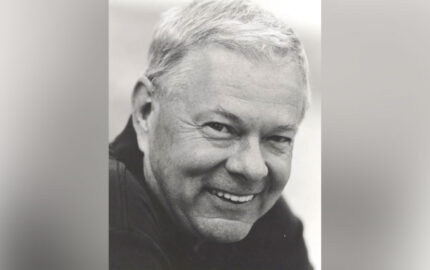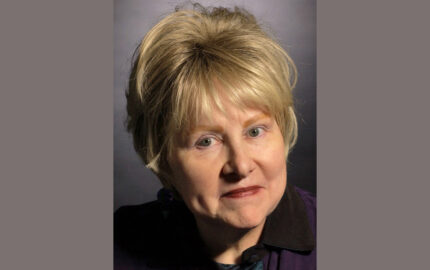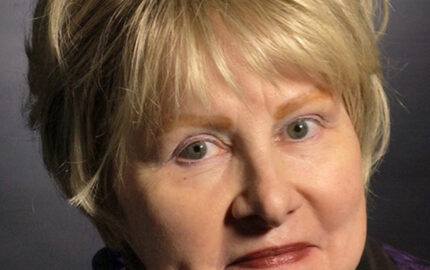John Carroll was a great editor and a great friend. During the seven years we worked together at The Baltimore Sun, we talked every day—seven days a week, 52 weeks a year—so I witnessed John’s brilliance firsthand. His genteel, quiet demeanor in many ways belied his intense interest in great stories and his determination to make sure that when the stories reached print, they were written with fluidity and packed the maximum impact.
One of John’s great skills was his ability to see the forest when the rest of us were still wandering in the trees. A classic case in point was the Sun’s story on the hazards of shipbreaking, which received the Pulitzer Prize for Investigative Reporting in 1998. Our maritime reporter, Will Englund, had written a story about the activities along Baltimore’s waterways and observed the dismantling for scrap of the Coral Sea, a World War II vintage aircraft carrier. Englund said the work looked dangerous, and that the asbestos-laden ship might also be harmful to the Patapsco River. When John read the story, he wondered aloud whether this was happening elsewhere in the United States and around the world. Within days, Englund had been teamed up with our colleague, Gary Cohn. Their reporting over the next year took them to Wilmington, North Carolina, Long Beach, California, and, eventually, to the remote shores of southern India. Their story fulfilled John’s vision and led to major reforms of how U.S. ships are dismantled.
John loved good stories—stories in the newspaper, quirky stories about our colleagues, his friends and his family, and stories about his own adventures and youthful misadventures. When he was a student at Haverford College, John and some of his friends, having quaffed more than a few beers, decided to greet the great San Francisco Giants centerfielder, Willie Mays. They did it by racing onto the field at old Connie Mack Stadium, which resulted in their immediate arrest by the ever-vigilant Philadelphia police—and a quick release after some timely political intervention.
John was also a gifted and often brilliant headline writer. When the Sun was about to publish an investigative series on juvenile boot camps, created to help teenagers who had run afoul of the law change their ways, John was confronted with the prospect of a two-line headline with space for only seven letters on each line. After agonizing about the precisely right approach, John typed out “From ‘Yo’ To ‘Sir’” and presented it to me with his whimsical smile. Perfection—and brilliance.
When John’s wonderful wife, Lee, who was teaching in a Baltimore elementary school, lamented the fact that her kids were struggling to learn to read, John initiated an in-depth series in The Sun that examined the merits of teaching reading through phonics—the old-fashioned, traditional method—versus the whole language method. That series, known as “Reading By Nine,” galvanized the community and inspired hundreds of Sun employees and others to volunteer as public school reading tutors. That was John Carroll at his best–quintessential public service journalist.
However great John was as an editor (and in my book, he was one of our generation’s true giants, along with Gene Roberts and Ben Bradlee) he was an even better friend–loyal, generous, sensitive, thoughtful, kind, fun loving, and forever irreplaceable.
Read more about John Carroll
One of John’s great skills was his ability to see the forest when the rest of us were still wandering in the trees. A classic case in point was the Sun’s story on the hazards of shipbreaking, which received the Pulitzer Prize for Investigative Reporting in 1998. Our maritime reporter, Will Englund, had written a story about the activities along Baltimore’s waterways and observed the dismantling for scrap of the Coral Sea, a World War II vintage aircraft carrier. Englund said the work looked dangerous, and that the asbestos-laden ship might also be harmful to the Patapsco River. When John read the story, he wondered aloud whether this was happening elsewhere in the United States and around the world. Within days, Englund had been teamed up with our colleague, Gary Cohn. Their reporting over the next year took them to Wilmington, North Carolina, Long Beach, California, and, eventually, to the remote shores of southern India. Their story fulfilled John’s vision and led to major reforms of how U.S. ships are dismantled.
John loved good stories—stories in the newspaper, quirky stories about our colleagues, his friends and his family, and stories about his own adventures and youthful misadventures. When he was a student at Haverford College, John and some of his friends, having quaffed more than a few beers, decided to greet the great San Francisco Giants centerfielder, Willie Mays. They did it by racing onto the field at old Connie Mack Stadium, which resulted in their immediate arrest by the ever-vigilant Philadelphia police—and a quick release after some timely political intervention.
John was also a gifted and often brilliant headline writer. When the Sun was about to publish an investigative series on juvenile boot camps, created to help teenagers who had run afoul of the law change their ways, John was confronted with the prospect of a two-line headline with space for only seven letters on each line. After agonizing about the precisely right approach, John typed out “From ‘Yo’ To ‘Sir’” and presented it to me with his whimsical smile. Perfection—and brilliance.
When John’s wonderful wife, Lee, who was teaching in a Baltimore elementary school, lamented the fact that her kids were struggling to learn to read, John initiated an in-depth series in The Sun that examined the merits of teaching reading through phonics—the old-fashioned, traditional method—versus the whole language method. That series, known as “Reading By Nine,” galvanized the community and inspired hundreds of Sun employees and others to volunteer as public school reading tutors. That was John Carroll at his best–quintessential public service journalist.
However great John was as an editor (and in my book, he was one of our generation’s true giants, along with Gene Roberts and Ben Bradlee) he was an even better friend–loyal, generous, sensitive, thoughtful, kind, fun loving, and forever irreplaceable.
Read more about John Carroll


